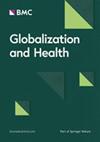COVID-19 的窘境
IF 4.5
2区 医学
Q1 PUBLIC, ENVIRONMENTAL & OCCUPATIONAL HEALTH
引用次数: 0
摘要
Syndemic 和 infodemic 这两个术语都被用于 COVID-19 大流行病,它们强调的是与流行病爆发本身不同的社会文化动态。我们认为,COVID-19 大流行暴露了另一种重要的社会政治动态,而 "quandemic"("量化 "和 "大流行 "的谐音)这一概念最能体现这一动态。过去几十年来,在决策和评估中使用量化指标的情况越来越多,其驱动力是数据供应的增加和需求的增长之间的协同关系。在大多数方面,这是一个可喜的发展。然而,"窘境 "指的是一小部分量化指标主导决策和公共辩论,而忽略了更细致入微的多学科讨论。因此,我们认为,"流行病 "将复杂的流行病简化为少数几个指标,呈现出过于简化的图景。在 COVID-19 期间,这些指标是病例数、死亡人数、住院人数、诊断检测、病床占用率、R 编号和疫苗接种覆盖率的不同迭代。这些有限的指标逐渐成为国际公认的大流行病有效管理基准。根据北欧地区的经验,我们提出了疫情的四种不同动态特征:1)数量有限的指标往往在政治、专家和公共领域占据主导地位,并随着时间的推移表现出很大的僵化性。2) 这些为数不多的指标挤掉了与大流行病应对相关的其他形式的证据。3) 这些衡量标准往往偏向于大流行病管理的某些结果,如降低住院率,而没有反映潜在的不利影响,如社会隔离和孤独。4) 最后,这些指标很容易在各国之间实现标准化,并在国际比较和基准的基础上产生竞争态势。窘境并非不可避免。虽然衡量标准是循证决策不可或缺的一部分,但关注疫情动态也意味着要识别这些为数不多但占主导地位的衡量标准可能无法捕捉到的相关证据。大流行病应对措施需要考虑多层次的脆弱性和风险,包括社会经济不平等和并发症。本文章由计算机程序翻译,如有差异,请以英文原文为准。
The COVID-19 quandemic
The terms syndemic and infodemic have both been applied to the COVID-19 pandemic, and emphasize concurrent socio-cultural dynamics that are distinct from the epidemiological outbreak itself. We argue that the COVID-19 pandemic has exposed yet another important socio-political dynamic that can best be captured by the concept of a quandemic – a portmanteau of “quantification” and “pandemic”. The use of quantifiable metrics in policymaking and evaluation has increased throughout the last decades, and is driven by a synergetic relationship between increases in supply and advances in demand for data. In most regards this is a welcome development. However, a quandemic, refers to a situation where a small subset of quantifiable metrics dominate policymaking and the public debate, at the expense of more nuanced and multi-disciplinary discourse. We therefore pose that a quandemic reduces a complex pandemic to a few metrics that present an overly simplified picture. During COVID-19, these metrics were different iterations of case numbers, deaths, hospitalizations, diagnostic tests, bed occupancy rates, the R-number and vaccination coverage. These limited metrics came to constitute the internationally recognized benchmarks for effective pandemic management. Based on experience from the Nordic region, we propose four distinct dynamics that characterize a quandemic: 1) A limited number of metrics tend to dominate both political, expert, and public spheres and exhibit a great deal of rigidity over time. 2) These few metrics crowd-out other forms of evidence relevant to pandemic response. 3) The metrics tend to favour certain outcomes of pandemic management, such as reducing hospitalization rates, while not capturing potential adverse effects such as social isolation and loneliness. 4) Finally, the metrics are easily standardized across countries, and give rise to competitive dynamics based on international comparisons and benchmarking. A quandemic is not inevitable. While metrics are an indispensable part of evidence-informed policymaking, being attentive to quandemic dynamics also means identifying relevant evidence that might not be captured by these few but dominant metrics. Pandemic responses need to account for and consider multilayered vulnerabilities and risks, including socioeconomic inequities and comorbidities.
求助全文
通过发布文献求助,成功后即可免费获取论文全文。
去求助
来源期刊

Globalization and Health
PUBLIC, ENVIRONMENTAL & OCCUPATIONAL HEALTH-
CiteScore
18.40
自引率
1.90%
发文量
93
期刊介绍:
"Globalization and Health" is a pioneering transdisciplinary journal dedicated to situating public health and well-being within the dynamic forces of global development. The journal is committed to publishing high-quality, original research that explores the impact of globalization processes on global public health. This includes examining how globalization influences health systems and the social, economic, commercial, and political determinants of health.
The journal welcomes contributions from various disciplines, including policy, health systems, political economy, international relations, and community perspectives. While single-country studies are accepted, they must emphasize global/globalization mechanisms and their relevance to global-level policy discourse and decision-making.
 求助内容:
求助内容: 应助结果提醒方式:
应助结果提醒方式:


